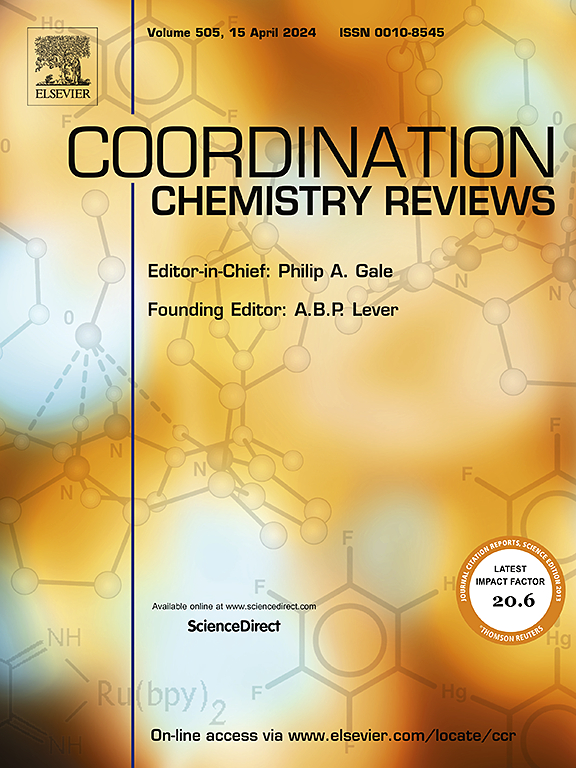用于检测生态系统中污染物的新兴传感器技术
IF 20.3
1区 化学
Q1 CHEMISTRY, INORGANIC & NUCLEAR
引用次数: 0
摘要
由于各种工业过程和现代农业活动,环境污染日益严重。有机和无机化合物的过度使用导致活性化学物质在水、土壤和空气中积累,给生态系统造成许多问题,也对人类健康造成许多影响。为了有效地管理环境中的这些污染物,必须准确地检测和量化其在各自环境介质中的水平。在过去的十年中,通过数字方法,特别是基于传感器的技术,各种环境介质中污染物浓度的检测有了很大的发展,这些技术具有成本效益、效率和生态友好性。这些传感器技术已经广泛应用于环境、农业和医疗领域。本文综述了环境污染和传感器技术在污染物检测中的应用。这里,我们描述了环境污染和各种污染物对生态系统的影响。此外,我们重点介绍了用于检测环境中有机化合物和重金属的各种类型的传感器(比色、光学、电化学、库仑、电化学发光和生物传感器),并详细阐述了它们的作用模式。此外,利用这些基于传感器的设备来检测不同样品中的各种污染物,如水、土壤、各种食品材料和人体样品,已经进行了严格的分析。最后,我们详细阐述了定期监测环境介质中污染物所面临的挑战。本文章由计算机程序翻译,如有差异,请以英文原文为准。

Emerging sensor technologies for detecting pollutants in ecosystems
Environmental pollution is increasing everyday due to various industrial processes and modern agricultural activities. The excessive use of organic and inorganic compounds results in the accumulation of active chemical substances in water, soil, and air, causing numerous problems for ecosystems, it also leading numerous health impacts to humans. To effectively manage these pollutants in environment, it is essential to accurately detect and quantify their levels in the respective environmental media. In the past decade, the detection of pollutant concentrations in various environmental media has greatly developed through digital methods, specifically sensor-based techniques that are cost-effective, efficient, and eco-friendly. These sensor technologies have been frequently applied across environmental, agricultural, and medical fields. This review delivered combined information such as environmental pollution and sensors technologies for pollutant detection. Here, we describe environmental pollution and impacts of various pollutants on ecosystems. Furthermore, we focus on various types of sensors (colorimetric, optical, electrochemical, coulometric, electrochemiluminescence, and biosensor) used for the detection of organic compounds and heavy metals in the environment and elaborate on their modes of action. In addition, the utilization of these sensor-based devices for detecting various pollutants in different samples such as water, soil, diverse food materials, and human samples has been critically analyzed. Finally, we have elaborated on the challenges associated with the regular monitoring of pollutants in environmental media.
求助全文
通过发布文献求助,成功后即可免费获取论文全文。
去求助
来源期刊

Coordination Chemistry Reviews
化学-无机化学与核化学
CiteScore
34.30
自引率
5.30%
发文量
457
审稿时长
54 days
期刊介绍:
Coordination Chemistry Reviews offers rapid publication of review articles on current and significant topics in coordination chemistry, encompassing organometallic, supramolecular, theoretical, and bioinorganic chemistry. It also covers catalysis, materials chemistry, and metal-organic frameworks from a coordination chemistry perspective. Reviews summarize recent developments or discuss specific techniques, welcoming contributions from both established and emerging researchers.
The journal releases special issues on timely subjects, including those featuring contributions from specific regions or conferences. Occasional full-length book articles are also featured. Additionally, special volumes cover annual reviews of main group chemistry, transition metal group chemistry, and organometallic chemistry. These comprehensive reviews are vital resources for those engaged in coordination chemistry, further establishing Coordination Chemistry Reviews as a hub for insightful surveys in inorganic and physical inorganic chemistry.
 求助内容:
求助内容: 应助结果提醒方式:
应助结果提醒方式:


